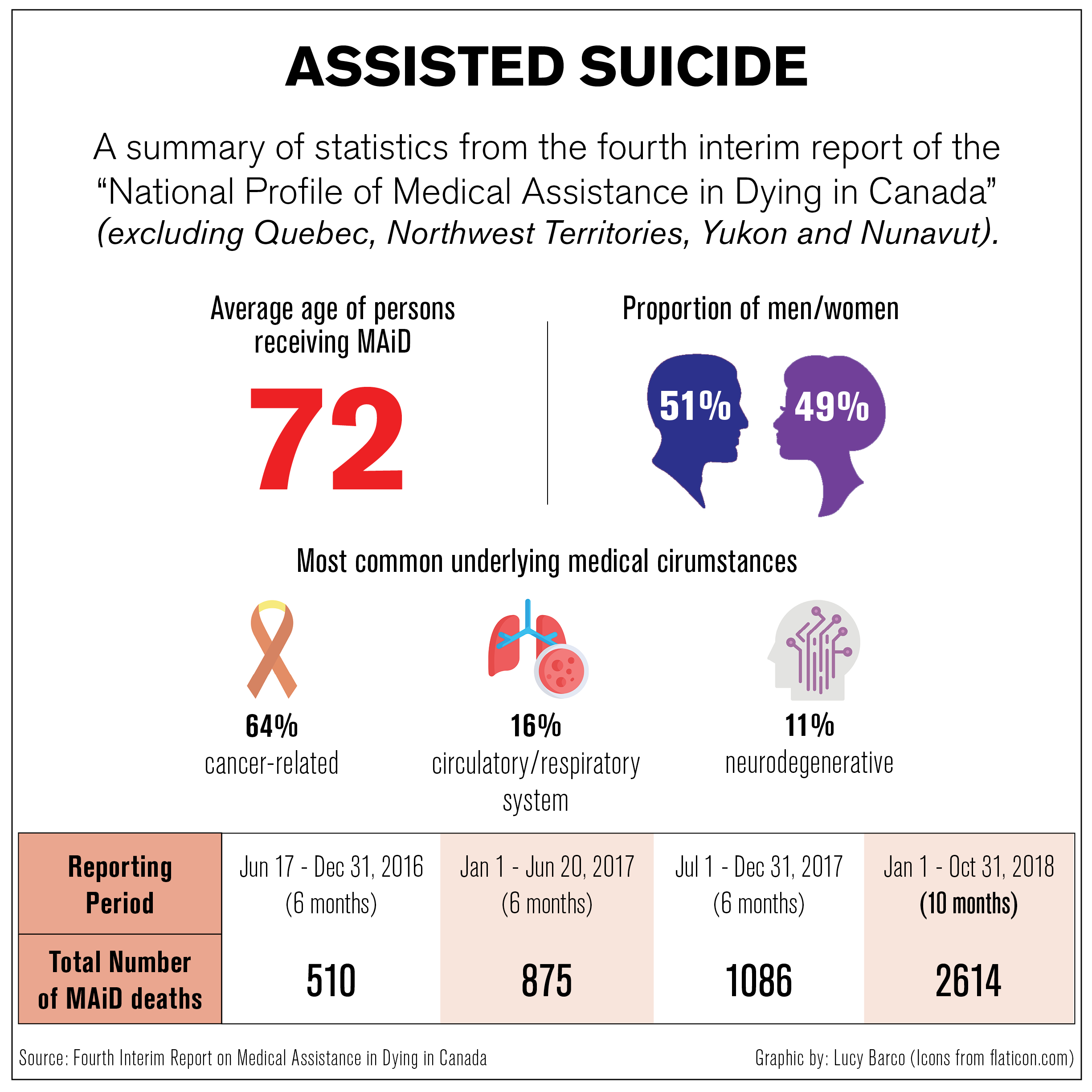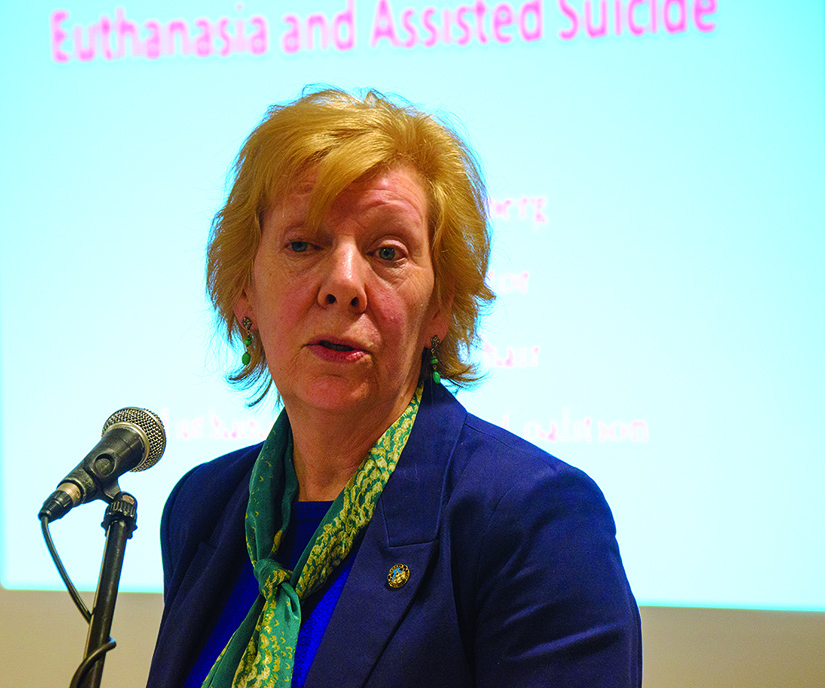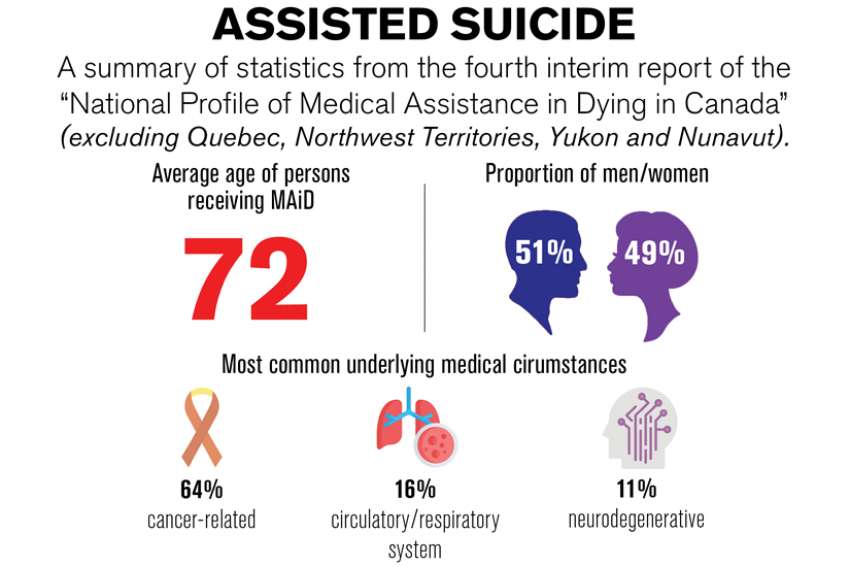The actual number is likely higher when factoring in parts of the country that currently are not included in the national report published by Health Canada.
 The latest statistics are contained in the “Fourth Interim Report on Medical Assistance in Dying in Canada.” It will be the last one to deliver incomplete numbers that omit Quebec and offer no reasons why patients are seeking medically-administered death.
The latest statistics are contained in the “Fourth Interim Report on Medical Assistance in Dying in Canada.” It will be the last one to deliver incomplete numbers that omit Quebec and offer no reasons why patients are seeking medically-administered death.
In the 10-month reporting period between Jan. 1 and Oct. 31, 2018, there were 2,614 medically-administered deaths in Canada, excluding Quebec, the Northwest Territories, Yukon and Nunavut. The Quebec numbers are excluded because they have had separate reporting periods, but that variance is ending and they will be included in future reports. The number from the territories have not been included in the interim report because of “small numbers and associated concerns for the privacy of the patients and the providers involved,” says the report.
Since euthanasia was legalized on Dec. 10, 2015 the total national number stands at 6,749, which includes Quebec and the territories.
The most recent Quebec statistics, up to March 31, 2018, indicate 1,664 requested deaths in that province since December 2015.
The report concludes that “Canada’s percentage of medically-assisted deaths (as a proportion of total deaths) increased only slightly since the last reporting period.”
“The percentage of deaths due to MAiD in Canada also continues to remain within the percentage of medically-assisted deaths provided in other countries, where 0.4 per cent (Oregon, USA, 2017) to four per cent (Netherlands, 2017) of total deaths have been attributed to a medically-assisted death,” said the report.
While Health Canada may find no cause for alarm, Canadian Catholic Bioethics Institute executive director Moira McQueen is concerned.
“That’s one in every 100. And if it’s higher than that — which everybody thinks it is because of the non-reporting parts (of the country including Quebec, the Yukon, the Northwest Territories and Nunavut) — you’re maybe talking about one in 50,” McQueen said. “That’s actually quite a lot.”
Where previous interim reports covered six-month periods, the fourth summary covers 10 months, complicating comparisons and analysis of trends.
McQueen is worried by the relatively young age of people requesting medical deaths. The statistics indicate a drop in the median age from 73 to 72.
“Why do some patients go this way, especially in their early to mid-70s?” she wonders.
While requested deaths for most age groups remain around one per cent, nearly two per cent of deaths in the age group 65-70 were medically induced, according to the report.
There are other significant divergences between patients who choose euthanasia and the rest of the population. Only 44 per cent of patients choosing a medical death die in a hospital, compared to 60 per cent of the general population, according to Statistics Canada. While only about 30 per cent of Canadians die at home (according to the Canadian Hospice Palliative Care Association), 42 per cent of induced deaths occur in people’s homes.
A disproportionate number of euthanasia requests seem to be coming from Canada’s shrinking small-town and rural population. While more than 82 per cent of Canadians live in cities of 100,000 people or more, only 56 per cent of requested deaths are in big cities.
At this point the figures fail to indicate if people are choosing euthanasia because they want to die at home, or whether that option becomes more appealing in parts of the country where palliative care is harder to come by, said McQueen.
 “Good palliative care is available,” said McQueen. “And the point is that there needs to be more available in places where it’s not.”
“Good palliative care is available,” said McQueen. “And the point is that there needs to be more available in places where it’s not.”
When the next report comes out in the spring of 2020, McQueen looks forward to more complete reporting about the reasons people are choosing to die by lethal injection.
“The statistics don’t reveal what I am calling the existential questions. They really don’t,” she said.
“That’s a problem.”
(Note: This story has been updated to clarify how statistics were compiled.)
Support The Catholic Register
Unlike many other news websites, The Catholic Register has never charged readers for access to the news and information on our site. We want to keep our award-winning journalism as widely available as possible. But we need your help.
For more than 125 years, The Register has been a trusted source of faith based journalism. By making even a small donation you help ensure our future as an important voice in the Catholic Church. If you support the mission of Catholic journalism, please donate today. Thank you.


